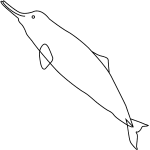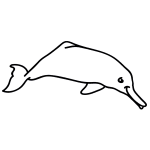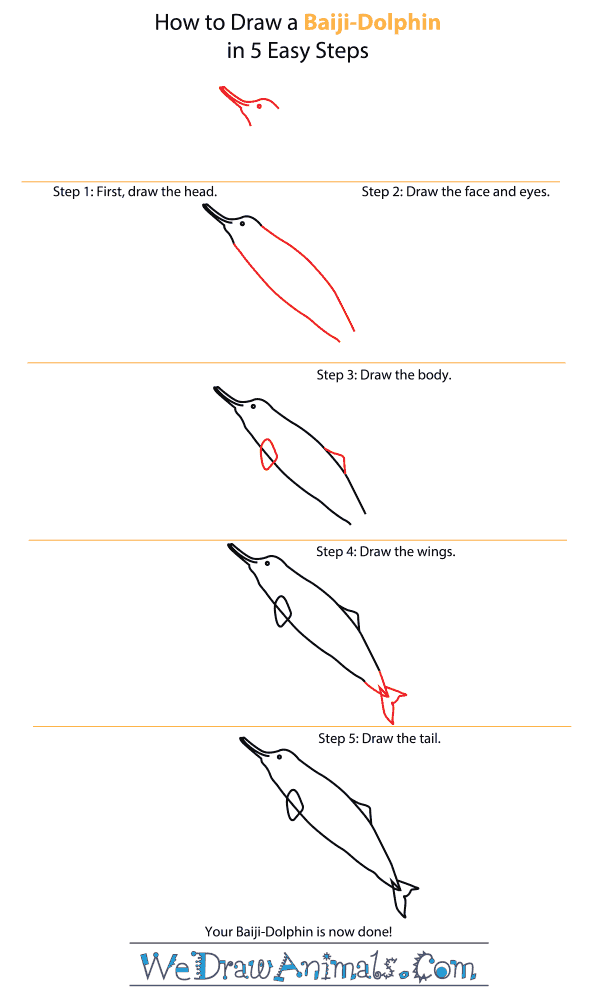In this quick tutorial you'll learn how to draw a Baiji in 5 easy steps - great for kids and novice artists.
The images above represent how your finished drawing is going to look and the steps involved.
Below are the individual steps - you can click on each one for a High Resolution printable PDF version.
At the bottom you can read some interesting facts about the Baiji.
Make sure you also check out any of the hundreds of drawing tutorials grouped by category.
How to Draw a Baiji - Step-by-Step Tutorial
Step 2: Draw a line through his beak for the mouth. Then add a small eye. These river dolphins swam through murky river waters so they didn't use their eyes much.
Step 3: When you draw the body, the lines are nearly straight. Just curve them away from each other a little bit. Leave the bottom open so we can add the tail later.
Step 4: Next, we draw the fins. One is a fat little triangle on the top of its body and the other is higher up on the other side.
Step 5: Extend the back of the dolphin into a V and add the tail. It looks like an M. Your baiji is now complete! To color your dolphin, they had white undersides and the rest of their body was a light blue-gray.
Interesting Facts about the BAIJI
The Baiji is a member of the dolphin family and the scientific term for them is Lipotes vexillifer. The name means “left behind” (Lipotes) and “flag bearer” (vexillifer), since they are very fast and have a triangular dorsal fin. Their mouth does not evenly taper to the head like the larger finned Bottlenose dolphins. Having poor vision, they rely on sonar for navigation. Most believe it is extinct.
Did you know?
- The last known animal died in 2002.
- These animals have been known to reach almost 9 feet.
- This species may live for up to 24 years.
- They were last reported to have been seen in 2007.
- It has pregnancy periods up to 11 months.
- These have babies that nurse for as long as 20 months.
- They have only 1 baby for each pregnancy.
This type of animal is also called Yangtze Goddess, symbolizing peace and prosperity. They have fossils of relatives from over 25 million years ago, that migrated into the Yangtze River. Industrial advances have reduced the population to being critically endangered, making it the most endangered cetacean. This animal was taken into captivity in order to increase survival, but that strategy failed.








